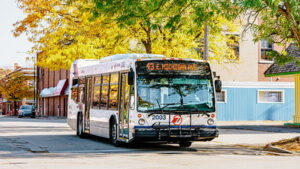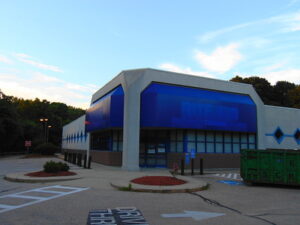In Economics 101, one of the first concepts that students learn about is “opportunity cost.” When money is limited, a choice to spend it on one option eliminates other options. The decision-maker loses the potential benefits or gains from unchosen options; those potential gains are the opportunity costs of a spending decision.
Of course, hindsight is 20/20, but there’s a lot of upside to foresight. We hope that those we elect or select to oversee our community colleges have some foresight when it comes to avoiding bad decisions. It is valuable to consider the opportunity costs of some of the spending decisions that community college trustees have made, especially in an election year.
Here are a recent spending decisions to consider.
Umpqua Community College
Yesterday, Umpqua Community College in Douglas, OR debuted its new mobile health services van. A local healthcare provider staffs the van. The provider will make regular visits to the campus. The onsite staff can refer students to other providers in its healthcare network, and provide basic health care services, like examinations, vaccinations, COVID testing, and preventative healthcare services.
While this is a mobile service, some community colleges have on-campus clinics where students can access the healthcare system as a benefit of enrollment. This approach to delivering healthcare can be especially helpful for students in both rural and urban settings, where healthcare may be hard to access due to limited availability or high cost.
Imagine what an on-campus healthcare clinic could have done for Washtenaw Community College students. What health support services could WCC have offered if it took the millions of dollars it spent on building, financing, operating, and maintaining the Health and Fitness Center and spent it instead on building a student healthcare facility?
Atlantic Cape Community College
Atlantic Cape Community College in Atlantic City, NJ spent about $3M to build a wind energy training center on campus. The center will provide safety training that supports New Jersey’s growing offshore wind energy industry. Atlantic Shores, a New Jersey energy provider, plans to build approximately 160 turbines off the New Jersey coastline. ACCC’s program will be able to train thousands of people to work in alternative energy in that state.
Imagine what kinds of occupational education programs WCC could have implemented if the Trustees had not allowed the Administration to wait for ten additional years to remodel the Morris Lawrence Building. The initial cost of the rebuild was something over $3M, but because the school waited a decade, the cost of the project more than quadrupled to $13.5M. How many high-wage training programs could WCC have built if it addressed the needs of the Morris Lawrence Building when they first emerged?
Maine Community College System
The Maine Community College System announced a partnership with Maine’s defense contractors to train 8,000 workers over the next 4-6 years. The coalition expects to see workforce demand of 1,200 to 1,700 workers each year through 2030.
The coalition, known as the Maine Defense Industry Association (MDIA) has received a partial funding commitment of $3.5M, which will help build a new $6.5M welding facility at York County Community College. There is a high demand for welders, iron workers and other skilled tradespeople at places like the Bath Iron Works, the Portsmouth Naval Yard, and Pratt and Whitney. These three organizations have the greatest need for skilled tradespeople. The coalition will also receive $5M in funding from the United States Navy to build a new manufacturing trades center at YCCC.
Imagine what WCC could do with $8.5M in funding for skilled trades education. Michigan received about $5.6B in 2021 in defense-related funding from the federal government. That’s 75% more funding than Maine received the same year. What could WCC do with millions of dollars to support Michigan’s defense contractors?
So, the question here is why isn’t WCC making student-oriented investments in academic programs and facilities on campus? Or more to the point, why has WCC spent tens of millions of dollars on facilities not intended for student use, and that have no meaningful economic benefit to Washtenaw County’s economy? Why is WCC’s Master Plan littered with “improvements” that have about as much economic impact as re-arranging the living room furniture?
When you vote this November, think about the opportunity costs of the WCC Board of Trustees decisions, and what the residents of Washtenaw County have given up in order to pay for them.
Photo Credit: 401(k) 2012 , via Flickr































